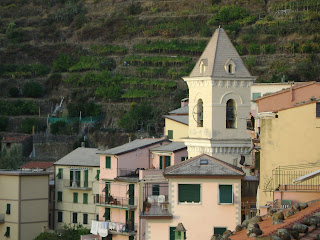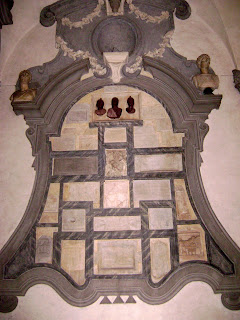On Friday, October 10, we took the local train from Pompeii to Naples and then took the Euro Star to Florence. Our host Antonio drove us and our luggage to the train station in Pompeii.

We stayed right in the middle of Florence, the birthplace of the Renaissance!
Here's Garold standing outside the entrance to our room in Casa Corsi, at Via dell'Albero, 13. We needed 3 keys here--one for the outside door, one for the hall, and another for the room. Our room was just off the kitchen. Our hostess told us we could make ourselves at home, use the kitchen, the garden, and the washing machine. By this time we were running pretty low on clean clothes, so this made us very happy! We had our breakfast each day at a nearby bar. We had a lot of fun picking out a different dolce to go with our cappuccino each morning.

One of the first places we visited was the Museo Casa di Dante. Dante Alighieri (1265-1361), who is known as the Father of the Italian language, wrote The Divine Comedy and The Inferno.
I loved this window with its heavy wooden frame and shutters.
Here is a bedroom like the one Dante would have occupied.
This is the kind of outfit Dante would have worn.

This is what a Florentine lady wore during the Middle Ages.












 They serve fish caught fresh in the Mediterranean. We tried sea bass, pesto sauce and fresh anchovies.
They serve fish caught fresh in the Mediterranean. We tried sea bass, pesto sauce and fresh anchovies.















 Botticelli's "Birth of Venus" was a departure from the Roman Catholic religious themes that dominated art at the time.
Botticelli's "Birth of Venus" was a departure from the Roman Catholic religious themes that dominated art at the time.
 Piero della Francesca's "Battista Sforza" and "Federico da Montefeltro" could have been a typical Italian couple.
Piero della Francesca's "Battista Sforza" and "Federico da Montefeltro" could have been a typical Italian couple.




















